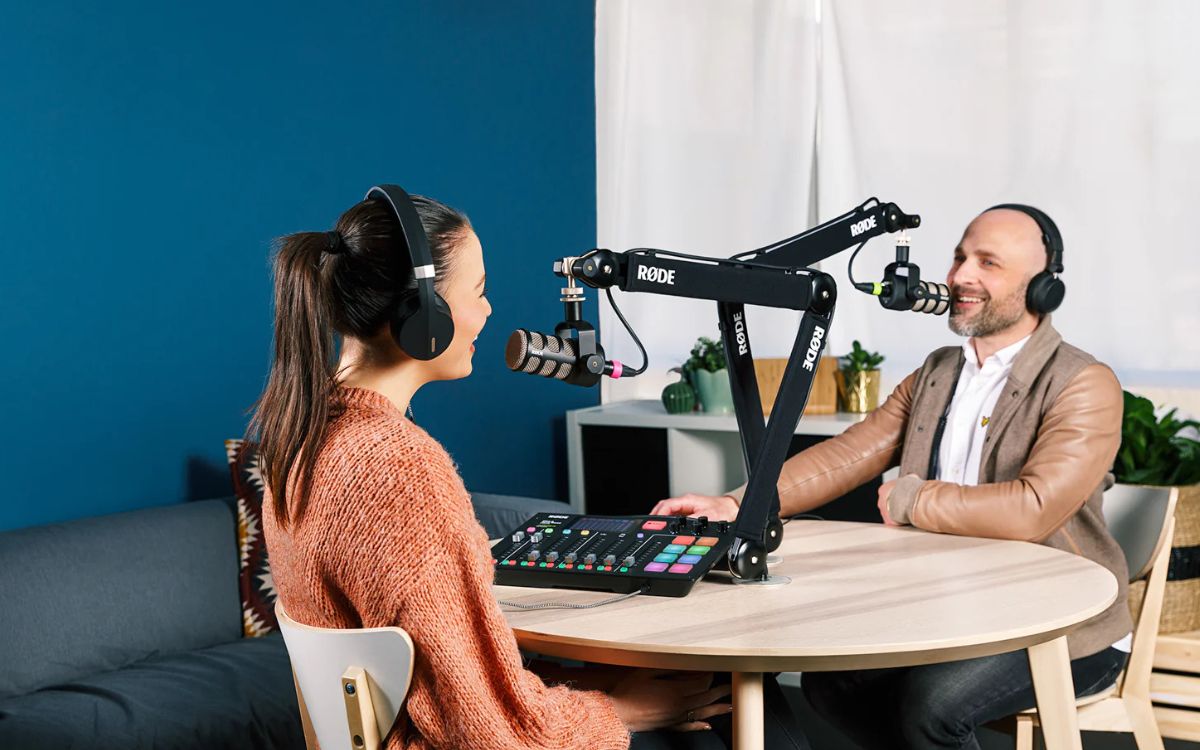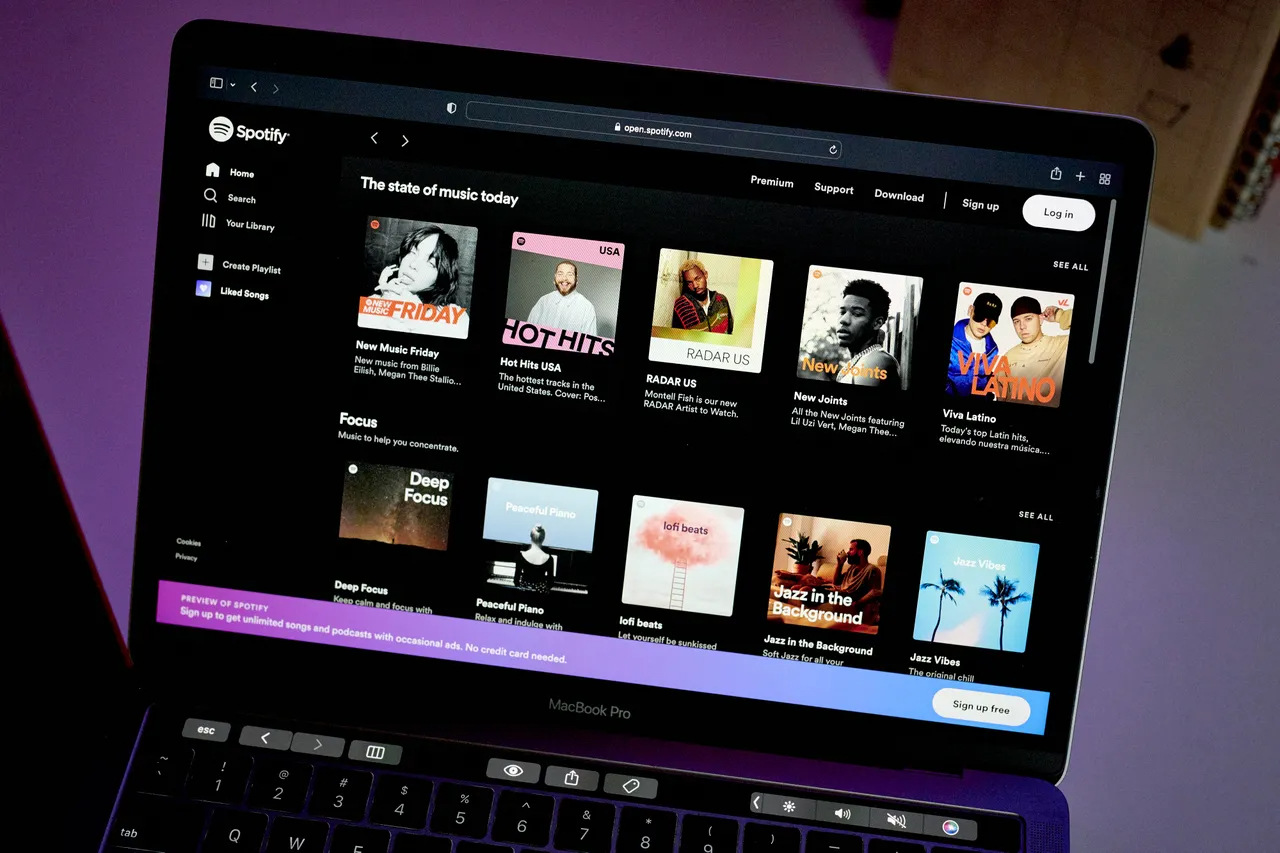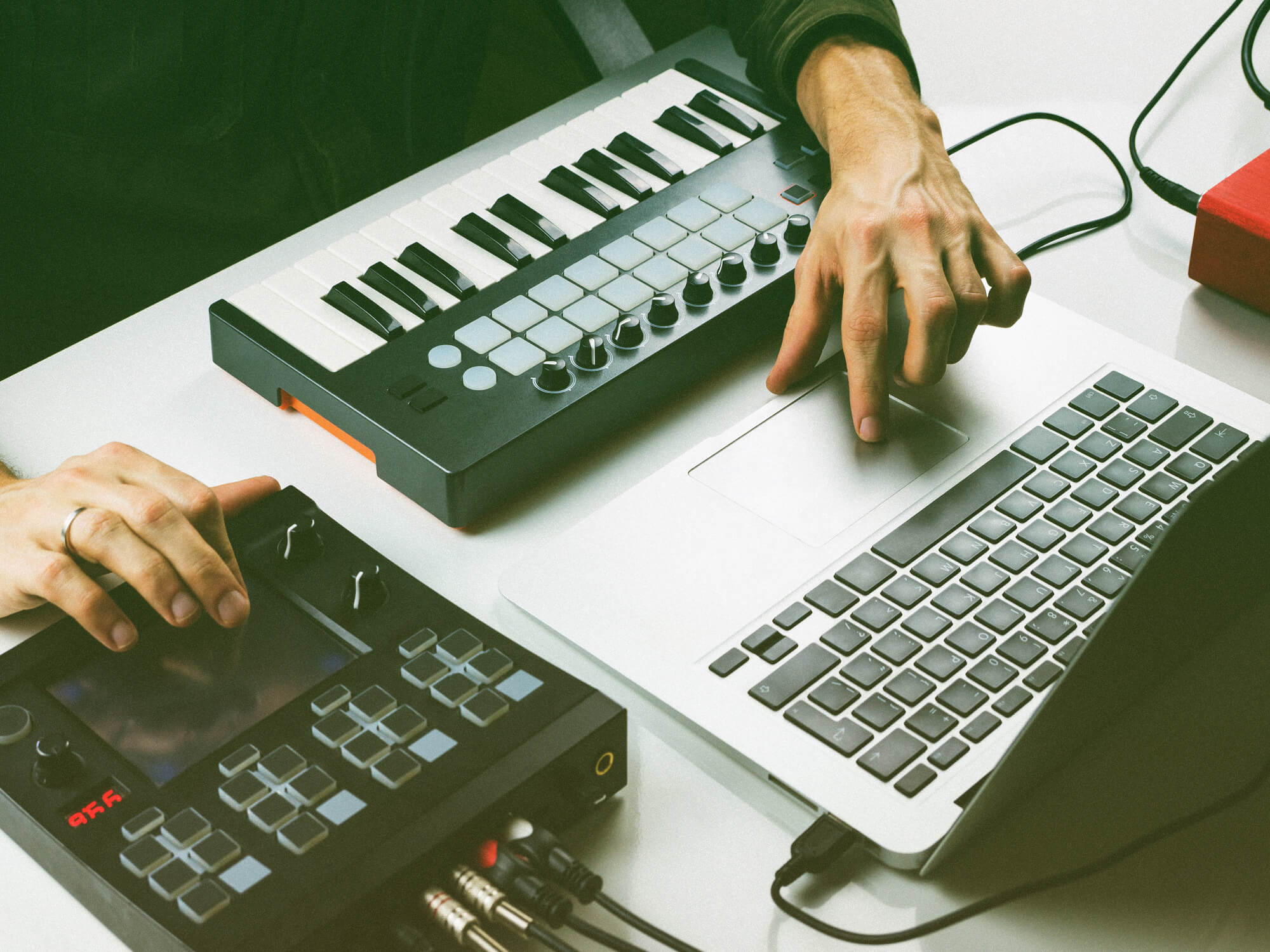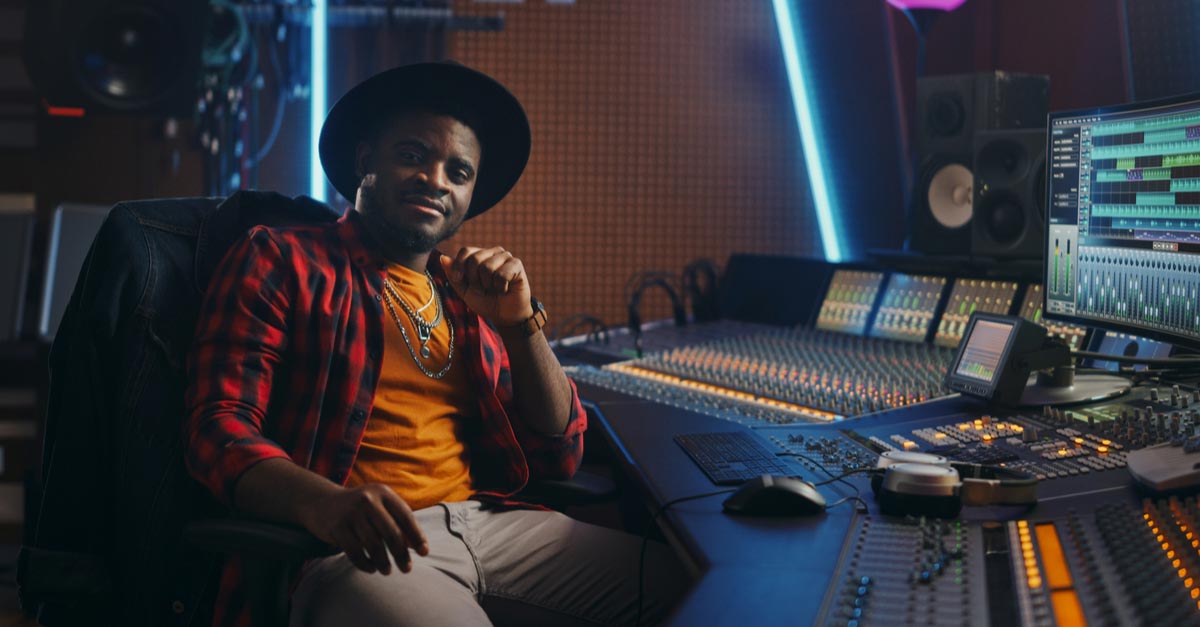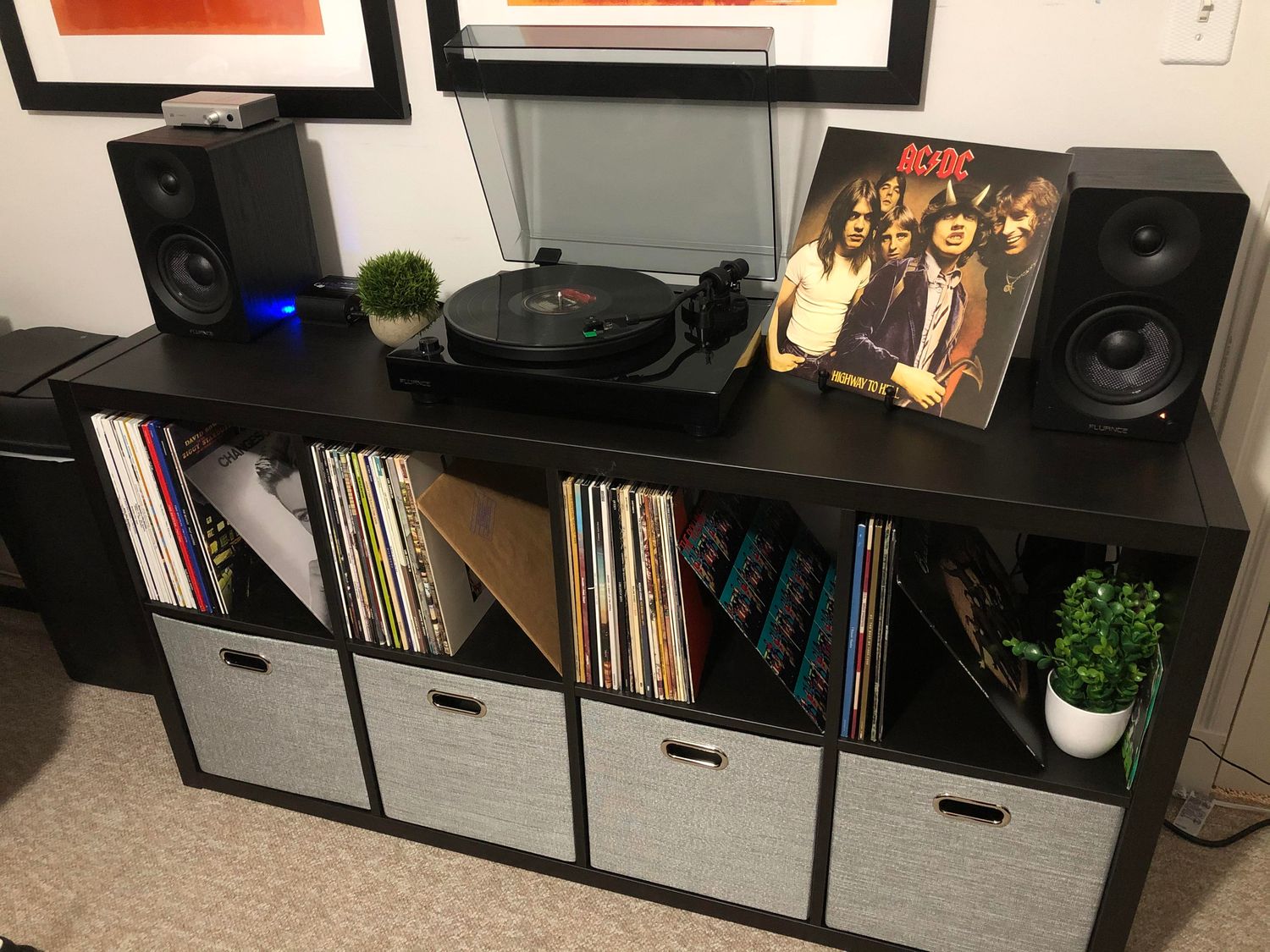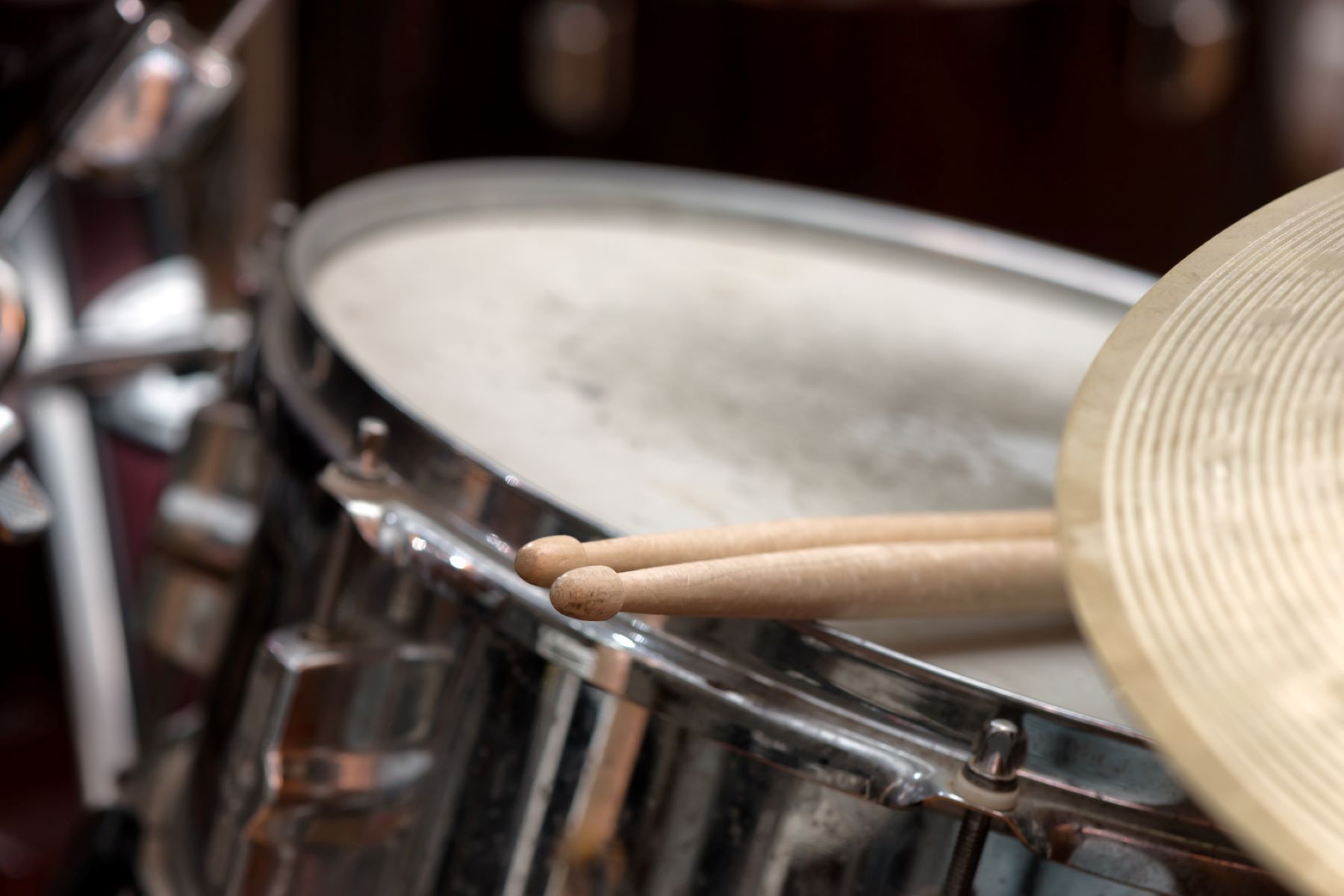Home>Production & Technology>Producer>What Equipment Do I Need To Be A Music Producer
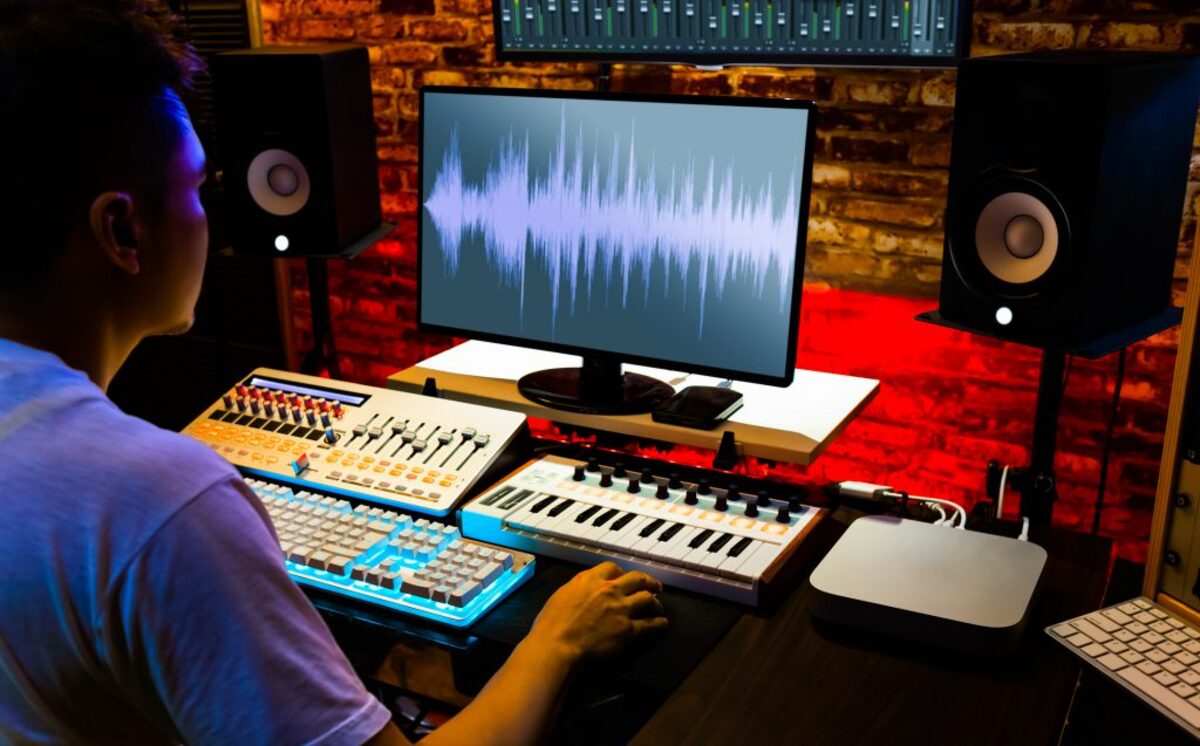

Producer
What Equipment Do I Need To Be A Music Producer
Published: March 6, 2024
Discover the essential equipment needed to become a music producer and kickstart your career in the music industry. Learn about the tools and gear required to excel as a producer.
(Many of the links in this article redirect to a specific reviewed product. Your purchase of these products through affiliate links helps to generate commission for AudioLover.com, at no extra cost. Learn more)
Table of Contents
Computer
A reliable and powerful computer is the cornerstone of a music producer's setup. It serves as the central hub for running digital audio workstation (DAW) software, manipulating audio files, and managing various aspects of the music production process. When selecting a computer for music production, there are several key factors to consider to ensure optimal performance and efficiency.
Processing Power
The processor, or CPU, is the brain of the computer and plays a crucial role in handling complex audio processing tasks. Music production often involves working with multiple tracks, virtual instruments, and audio effects, placing a considerable demand on the CPU. Opting for a multi-core processor with high clock speeds can significantly enhance the computer's ability to handle intensive music production tasks seamlessly.
RAM
Random access memory (RAM) is another critical component for music production. Adequate RAM allows the computer to store and access large amounts of data quickly, enabling smooth playback and efficient handling of multiple tracks and audio samples. For seamless music production performance, a minimum of 8GB of RAM is recommended, with 16GB or more being ideal for handling larger projects.
Storage
Fast and reliable storage is essential for storing audio files, sample libraries, and project data. Solid-state drives (SSDs) offer faster read and write speeds compared to traditional hard disk drives (HDDs), resulting in quicker load times for DAW software and large audio files. Additionally, investing in ample storage capacity is advisable to accommodate the growing library of music production assets.
Connectivity
A music producer's computer should feature a range of connectivity options to interface with audio interfaces, MIDI controllers, and other studio equipment. USB, Thunderbolt, and other high-speed ports are essential for seamless integration with external devices, ensuring efficient data transfer and minimal latency during recording and playback.
Operating System
Choosing the right operating system is crucial for compatibility with industry-standard music production software. While both Windows and macOS are widely used in the music production community, it's essential to ensure that the selected operating system is compatible with the preferred DAW and associated plugins.
In the realm of music production, a well-equipped computer forms the foundation for creativity and productivity. By prioritizing processing power, RAM, storage, connectivity, and operating system compatibility, music producers can build a robust workstation that empowers them to bring their musical visions to life with precision and efficiency.
Digital Audio Workstation (DAW) Software
Digital Audio Workstation (DAW) software serves as the creative playground and command center for music producers, offering a comprehensive suite of tools for recording, editing, arranging, mixing, and mastering audio tracks. Selecting the right DAW software is a pivotal decision that profoundly influences a producer's workflow, creativity, and overall music production experience.
Considerations for Choosing DAW Software
When exploring the diverse landscape of DAW software, producers are confronted with a myriad of options, each with its unique features, interface, and workflow. Understanding the key considerations for selecting DAW software can aid in making an informed choice that aligns with specific production needs and creative preferences.
Workflow and Interface
The workflow and interface of a DAW significantly impact a producer's efficiency and creative expression. Some DAWs feature a modular layout with customizable windows, while others adopt a more linear approach to arranging and editing audio. Evaluating the user interface and workflow of different DAWs enables producers to identify software that resonates with their preferred production style and facilitates seamless navigation.
Compatibility and Integration
Compatibility with third-party plugins, virtual instruments, and hardware devices is a critical aspect of DAW selection. Producers often rely on a diverse array of plugins and virtual instruments to sculpt their sonic landscapes, and ensuring that the chosen DAW seamlessly integrates with these tools is paramount. Moreover, compatibility with audio interfaces, MIDI controllers, and control surfaces enhances the versatility and functionality of the production setup.
Feature Set and Flexibility
The feature set of a DAW encompasses a broad spectrum of capabilities, including audio recording, MIDI sequencing, audio editing, mixing, and mastering tools. Evaluating the specific features and capabilities of different DAWs allows producers to align the software's strengths with their production requirements. Additionally, flexibility in terms of audio routing, signal processing, and automation empowers producers to realize their creative vision with precision and depth.
Support and Community
Access to comprehensive support resources and an active user community can significantly enhance the DAW experience. Robust technical support, user forums, tutorials, and online communities provide valuable avenues for troubleshooting, learning new techniques, and connecting with fellow producers. A vibrant user community fosters knowledge sharing, inspiration, and collaborative opportunities within the realm of music production.
Notable DAW Options
Several prominent DAWs have garnered widespread acclaim and adoption within the music production community, each offering a distinct blend of features, workflow, and sonic capabilities. Some notable DAW options include:
-
Ableton Live: Renowned for its innovative session view and real-time performance capabilities, Ableton Live excels in electronic music production and live performance.
-
Pro Tools: A staple in professional recording studios, Pro Tools is revered for its industry-standard editing, mixing, and post-production tools, making it a go-to choice for audio engineers and music producers alike.
-
Logic Pro X: Exclusively available for macOS, Logic Pro X boasts a comprehensive suite of virtual instruments, audio effects, and intuitive music creation tools, making it a compelling choice for Mac-based producers.
-
FL Studio: With its user-friendly interface and robust pattern-based sequencing, FL Studio has garnered a dedicated following among electronic music producers and beatmakers.
-
Studio One: Known for its streamlined workflow and powerful audio engine, Studio One offers a compelling platform for capturing musical ideas and bringing them to fruition with efficiency.
Final Thoughts
In the realm of music production, the choice of DAW software is deeply personal and profoundly influences a producer's creative journey. By carefully evaluating factors such as workflow, compatibility, feature set, and community support, producers can identify a DAW that harmonizes with their artistic vision and empowers them to craft compelling musical experiences. Ultimately, the selected DAW becomes an extension of the producer's creativity, serving as a versatile canvas for sonic exploration and artistic expression.
Audio Interface
An audio interface stands as a pivotal link between a music producer's computer and the world of professional audio recording and playback. It serves as a crucial bridge that facilitates high-quality audio input and output, enabling producers to capture pristine recordings, connect microphones and instruments, and achieve optimal sonic fidelity in their music production endeavors.
Functionality and Significance
The primary function of an audio interface is to convert analog audio signals into digital data that can be processed by the computer and vice versa. This conversion process is essential for maintaining the integrity and clarity of audio recordings, ensuring that subtle nuances and sonic details are faithfully preserved throughout the production chain. By offering a range of input and output options, audio interfaces empower producers to connect microphones, instruments, studio monitors, and headphones to their production setup, creating a versatile and professional audio ecosystem.
Key Considerations for Selection
When selecting an audio interface, producers should consider several key factors to ensure that the chosen device aligns with their specific production requirements and technical preferences. These considerations include the following:
-
Input and Output Configuration: Assessing the number and type of input and output connections is crucial for accommodating various recording and playback scenarios. XLR, TRS, and MIDI inputs, as well as balanced line outputs, contribute to the versatility and flexibility of an audio interface, allowing producers to capture diverse sound sources and interface with a wide range of studio equipment.
-
Preamp Quality: The quality of preamps integrated into the audio interface significantly impacts the clarity and character of recorded audio. High-quality preamps offer clean gain, low noise, and transparent sound reproduction, enhancing the fidelity of microphone and instrument recordings.
-
Sample Rate and Bit Depth: The ability to support high-resolution audio formats, such as 24-bit depth and sample rates beyond 44.1 kHz, enables producers to capture and reproduce audio with exceptional detail and dynamic range, contributing to the professional quality of their productions.
-
Compatibility and Connectivity: Ensuring compatibility with the producer's computer, operating system, and preferred digital audio workstation (DAW) is essential. Additionally, connectivity options such as USB, Thunderbolt, and PCIe facilitate seamless integration with the computer and other studio devices, minimizing latency and optimizing data transfer rates.
Notable Audio Interface Options
Several renowned audio interface manufacturers offer a diverse array of products tailored to the needs of music producers, recording engineers, and sound designers. Notable options include:
-
Focusrite Scarlett Series: Renowned for their high-quality preamps, low-latency performance, and intuitive design, the Scarlett series offers a range of interfaces suitable for various production scenarios, from solo home recording to professional studio setups.
-
Universal Audio Apollo Series: Known for their premium sound quality and integrated DSP processing, the Apollo series of audio interfaces provide producers with access to authentic analog emulations and studio-grade signal processing within the interface itself, elevating the sonic capabilities of the production setup.
-
PreSonus Studio Series: With a focus on affordability and versatility, the Studio series of audio interfaces from PreSonus delivers professional-grade audio performance, robust connectivity, and seamless integration with Studio One, their flagship DAW software.
-
RME Audio Interfaces: Renowned for their pristine sound quality, low-latency performance, and rock-solid drivers, RME audio interfaces cater to the demands of professional studio environments, offering a blend of technical excellence and reliability.
Empowering Sonic Creativity
In the realm of music production, an audio interface serves as a gateway to sonic exploration and creative expression. By selecting an audio interface that aligns with their technical requirements and sonic aspirations, producers can harness the power of high-fidelity audio capture, seamless connectivity, and professional-grade signal processing, empowering them to realize their musical visions with precision and artistry.
MIDI Keyboard
A MIDI keyboard, also known as a controller keyboard, stands as a fundamental tool in the arsenal of a modern music producer. This versatile device transcends the traditional role of a musical instrument, serving as a tactile interface for triggering virtual instruments, manipulating software parameters, and capturing expressive performances within the digital realm of music production.
Musical Expression and Creative Control
The MIDI keyboard functions as a conduit for translating musical ideas and emotions into the digital domain. Its piano-style keys, often velocity-sensitive and sometimes weighted, enable producers to impart nuanced dynamics and articulations, mimicking the organic feel of acoustic instruments. This tactile interaction fosters a deeper sense of musical expression, allowing producers to infuse their compositions with the subtleties and nuances that define captivating performances.
Integration with Virtual Instruments and DAWs
One of the primary roles of a MIDI keyboard is its seamless integration with virtual instruments and digital audio workstations (DAWs). By connecting the MIDI keyboard to the computer via USB or MIDI cables, producers gain direct access to an expansive palette of virtual sounds, ranging from classic pianos and orchestral instruments to cutting-edge synthesizers and electronic textures. This integration empowers producers to harness the sonic capabilities of software instruments, enabling them to compose, arrange, and perform with unparalleled flexibility and sonic diversity.
Workflow Enhancements and Performance Capabilities
Beyond its role as a musical input device, the MIDI keyboard serves as a versatile tool for enhancing the producer's workflow and live performance capabilities. Its array of assignable knobs, faders, and pads allows for real-time manipulation of parameters such as filter cutoff, envelope settings, and effect controls, providing a hands-on approach to shaping and sculpting sounds. Additionally, the inclusion of pitch bend and modulation wheels facilitates expressive pitch variations and dynamic modulations, adding a layer of emotive depth to performances and recordings.
Notable MIDI Keyboard Options
The market abounds with a diverse array of MIDI keyboard options, catering to the varying needs and preferences of music producers. Notable options include:
-
Native Instruments Komplete Kontrol Series: Renowned for their tight integration with the Komplete software suite, these MIDI keyboards offer comprehensive control over virtual instruments and effects, augmented by dynamic, touch-sensitive keybeds.
-
Arturia KeyLab Series: With a focus on vintage analog synthesizer emulation and tactile control, the KeyLab series provides a blend of authentic musical feel and extensive parameter manipulation, catering to producers with a penchant for classic sonic palettes.
-
Novation Launchkey Series: Designed with a focus on live performance and electronic music production, the Launchkey series combines responsive keybeds with intuitive performance pads and rotary encoders, fostering a dynamic and hands-on approach to music creation.
Empowering Creativity and Musical Exploration
In the realm of music production, the MIDI keyboard stands as a gateway to boundless creativity and musical exploration. Its fusion of expressive playability, seamless software integration, and workflow enhancements empowers producers to transcend technical barriers and immerse themselves in the art of sonic storytelling, ultimately shaping their musical visions with fluidity and depth.
Studio Monitors
Studio monitors, also referred to as reference monitors or studio speakers, are an indispensable tool for music producers, serving as the primary means of critically evaluating and shaping the sonic characteristics of their productions. Unlike consumer speakers designed for casual listening, studio monitors are engineered to deliver transparent and uncolored sound reproduction, enabling producers to make informed decisions regarding mix balance, tonal accuracy, and spatial imaging.
Precision and Accuracy
The hallmark of studio monitors lies in their ability to faithfully reproduce audio with precision and accuracy. This entails presenting a flat frequency response, where no particular frequency range is emphasized or attenuated, ensuring that producers perceive their music with utmost neutrality. By providing an unadulterated sonic canvas, studio monitors empower producers to discern subtle nuances, tonal imbalances, and spatial intricacies within their mixes, facilitating informed adjustments and refinements.
Nearfield Monitoring
Studio monitors are commonly employed in a nearfield monitoring configuration, where they are positioned in close proximity to the producer, typically at ear level and forming an equilateral triangle with the listening position. This setup minimizes the influence of room acoustics and reflections, allowing producers to perceive the direct sound from the monitors without significant coloration from the listening environment. The nearfield monitoring approach enhances the accuracy of critical listening, enabling producers to make precise judgments regarding mix elements and spatial placement.
Translating Mix Decisions
A paramount aspect of studio monitors is their capacity to facilitate mix translation, wherein the characteristics of a mix remain consistent and coherent across various playback systems and environments. By honing in on accurate frequency reproduction and detailed transient response, studio monitors empower producers to craft mixes that translate effectively to diverse listening setups, including consumer headphones, car stereos, and club sound systems. This ensures that the intended sonic impact and tonal balance of the music are preserved across different playback scenarios.
Notable Studio Monitor Options
The market offers a diverse selection of studio monitor options, catering to varying production requirements and sonic preferences. Notable options include:
-
KRK Rokit Series: Renowned for their affordability and robust bass response, the Rokit series of studio monitors from KRK has garnered popularity among producers seeking a balance of accuracy and low-frequency extension.
-
Yamaha HS Series: Embodying the legacy of Yamaha's iconic NS10 monitors, the HS series delivers a revealing and neutral sonic character, making it a favored choice for critical mixing and mastering applications.
-
Adam Audio T Series: Known for their precision and detailed imaging, the T series of studio monitors from Adam Audio offers transparent sound reproduction and extended high-frequency clarity, catering to producers with a penchant for analytical monitoring.
Elevating Sonic Integrity
In the realm of music production, studio monitors stand as guardians of sonic integrity, empowering producers to sculpt and refine their musical creations with unwavering precision and clarity. By embracing the uncolored transparency and accuracy of studio monitors, producers embark on a journey of sonic exploration and refinement, ultimately shaping their musical narratives with depth and fidelity.
Headphones
Headphones play a pivotal role in the music production ecosystem, offering a private and immersive listening environment that enables producers to scrutinize and fine-tune their audio creations with precision and clarity. Unlike consumer-oriented headphones designed for recreational listening, studio headphones are engineered to deliver accurate and uncolored sound reproduction, making them indispensable tools for critical monitoring, mixing, and sound design tasks.
Sonic Transparency and Isolation
One of the defining characteristics of studio headphones is their ability to provide sonic transparency and isolation. By presenting a flat frequency response and minimal distortion, studio headphones empower producers to discern subtle nuances, tonal balances, and spatial details within their mixes. This transparency is essential for making informed decisions regarding mix elements, tonal shaping, and spatial imaging, ensuring that the intended sonic characteristics of the music are faithfully represented.
Furthermore, the isolation offered by studio headphones allows producers to delve into the intricacies of their audio productions without the influence of external sound sources. This controlled listening environment minimizes distractions and external interference, enabling producers to focus on the minute details of their mixes and identify imperfections that may go unnoticed in a typical listening environment.
Critical Listening and Reference Checks
Studio headphones serve as invaluable tools for critical listening and reference checks, enabling producers to assess mix balance, stereo imaging, and tonal accuracy with a heightened level of scrutiny. By conducting detailed listening sessions through studio headphones, producers can pinpoint frequency imbalances, phase issues, and dynamic inconsistencies, facilitating precise adjustments and refinements to their mixes.
Moreover, studio headphones facilitate the evaluation of mix translation across different playback systems and environments. Producers can gauge how their mixes will sound on consumer headphones, car stereos, and various listening devices, ensuring that the sonic integrity and tonal balance of the music remain consistent across diverse playback scenarios.
Notable Studio Headphone Options
The market offers a diverse array of studio headphone options, each tailored to meet specific sonic preferences and production requirements. Notable options include:
-
Sennheiser HD 600: Renowned for their natural and detailed sound reproduction, the HD 600 headphones from Sennheiser offer a balanced and transparent sonic character, making them a favored choice for critical listening and analytical monitoring.
-
Beyerdynamic DT 770 Pro: With a focus on comfort and robust bass response, the DT 770 Pro headphones provide a closed-back design and precise sound reproduction, catering to producers seeking a blend of isolation and sonic accuracy.
-
Audio-Technica ATH-M50x: Embodying a versatile and dynamic sonic profile, the ATH-M50x headphones deliver exceptional clarity and transient response, making them well-suited for mixing, monitoring, and sound engineering tasks across various genres.
Elevating Sonic Precision
In the realm of music production, studio headphones stand as guardians of sonic precision, empowering producers to delve into the intricacies of their audio creations with unwavering accuracy and clarity. By embracing the transparent and isolated listening environment offered by studio headphones, producers embark on a journey of sonic exploration and refinement, ultimately shaping their musical narratives with depth and fidelity.
Microphones
Microphones serve as the primary transducers in the realm of audio capture, converting acoustic sound waves into electrical signals that can be recorded, processed, and manipulated within the domain of music production. The selection of an appropriate microphone is pivotal for capturing the nuances, timbres, and sonic textures inherent in vocal performances, acoustic instruments, and ambient sound sources.
When delving into the diverse landscape of microphones, producers encounter a range of options, each tailored to specific recording scenarios and sonic characteristics. Condenser microphones, renowned for their sensitivity and transient response, excel in capturing detailed vocals, acoustic instruments, and orchestral ensembles with exceptional clarity and fidelity. Their extended frequency response and nuanced sonic capture make them ideal for capturing the subtleties and nuances of musical performances.
Dynamic microphones, characterized by their robust construction and ability to handle high sound pressure levels, find their niche in capturing powerful and dynamic sound sources such as amplified instruments, percussion, and live vocal performances. Their rugged build and inherent resilience make them indispensable tools for live sound reinforcement and recording scenarios where durability and reliability are paramount.
Furthermore, ribbon microphones, revered for their smooth and vintage tonal character, offer a distinct sonic signature characterized by rich midrange warmth and gentle high-frequency roll-off. These microphones excel in capturing the soulful nuances of brass instruments, string sections, and guitar amplifiers, imparting a vintage and nostalgic quality to the recorded sound.
The choice of microphone also extends to specialized categories such as shotgun microphones, designed for precise directional capture and rejection of off-axis sound, making them invaluable for location recording, film production, and field sound capture. Additionally, boundary microphones, often utilized for conference rooms, stage productions, and ambient recording, leverage boundary effect to capture sound with enhanced clarity and spatial definition.
In the pursuit of capturing pristine and evocative audio recordings, the selection of an appropriate microphone is a deeply personal and technically informed decision. By understanding the sonic characteristics, polar patterns, and application-specific nuances of different microphone types, producers can curate a diverse and versatile microphone arsenal that empowers them to capture the essence and emotive depth of musical performances with precision and artistry.
Cables and Connectors
In the intricate ecosystem of music production, the role of cables and connectors is often understated yet profoundly impactful. These essential components form the conduits that facilitate the seamless flow of audio signals, data, and power throughout the production environment, ensuring reliable connectivity and pristine signal transmission.
The selection of cables and connectors is a critical consideration for music producers, as it directly influences the integrity of audio signals and the stability of the production setup. When sourcing cables, factors such as cable type, length, shielding, and connector quality warrant careful consideration to uphold sonic fidelity and minimize signal degradation.
Balanced audio cables, such as XLR and TRS (Tip-Ring-Sleeve) cables, are prevalent in studio environments due to their ability to mitigate electromagnetic interference and deliver clean, noise-free signal transmission. These cables feature three conductors—two for carrying the audio signal and one for grounding, effectively canceling out induced noise and ensuring robust and pristine audio connectivity.
In the realm of digital audio transmission, cables such as USB, Thunderbolt, and Ethernet cables play a pivotal role in interfacing audio interfaces, MIDI controllers, and external hardware with the computer. High-quality digital cables with robust shielding and reliable connectors are essential for maintaining stable data transfer rates and minimizing latency, thereby safeguarding the integrity of digital audio streams and MIDI communication.
Furthermore, power cables and connectors form the lifeline of studio equipment, providing the necessary electrical supply to audio interfaces, studio monitors, MIDI keyboards, and outboard gear. Ensuring the use of high-quality power cables and connectors, equipped with proper grounding and surge protection, is paramount for safeguarding the sensitive electronics within the production environment and minimizing the risk of electrical anomalies.
In the context of studio organization and workflow optimization, cable management solutions, such as cable ties, sleeves, and routing accessories, contribute to a tidy and efficient studio setup. By organizing and securing cables in a systematic manner, producers mitigate the risk of signal interference, accidental disconnection, and clutter, fostering a conducive environment for creativity and productivity.
Ultimately, the meticulous attention to cables and connectors in a music production setup reflects a commitment to sonic integrity, operational reliability, and seamless workflow efficiency. By investing in high-quality cables, connectors, and cable management solutions, music producers fortify the foundation of their production environment, ensuring that the conduit for audio signals and data remains robust, reliable, and conducive to the pursuit of sonic excellence.
External Hard Drive
An external hard drive stands as a stalwart ally in the arsenal of a music producer, offering a reliable and capacious storage solution for housing extensive audio libraries, project files, and sample collections. With the burgeoning size of high-resolution audio files, virtual instrument libraries, and multitrack recordings, the need for ample and dependable storage capacity has become paramount in the realm of music production.
The primary function of an external hard drive in the context of music production is to serve as a dedicated repository for housing and organizing the vast array of audio assets and project data. By leveraging the expansive storage capacity of an external hard drive, music producers can safeguard their creative endeavors, ensuring that no sonic masterpiece or musical idea is relegated to the confines of limited storage space.
In addition to storage capacity, the speed and reliability of an external hard drive are pivotal considerations for music producers. Opting for a high-speed external hard drive with robust data transfer rates facilitates seamless access to audio files, sample libraries, and project data, minimizing load times and enhancing the fluidity of the production workflow. Furthermore, the reliability and durability of the external hard drive play a crucial role in safeguarding the integrity of valuable music production assets, offering peace of mind and data security in the face of potential hardware failures or data loss incidents.
When selecting an external hard drive for music production, factors such as interface type, drive speed, and durability warrant careful consideration. USB 3.0 and Thunderbolt interfaces offer high-speed data transfer rates, ensuring efficient access to large audio files and sample libraries. Solid-state drives (SSDs) provide rapid read and write speeds, contributing to swift load times for digital audio workstation (DAW) projects and sample-based instruments. Additionally, rugged and shock-resistant enclosures enhance the physical durability of the external hard drive, making it well-suited for mobile production setups and on-the-go creativity.
Moreover, the organizational prowess of an external hard drive empowers music producers to curate a structured and accessible repository for their musical assets. By categorizing and archiving audio files, project backups, and sample libraries on the external hard drive, producers streamline their creative process and ensure efficient access to the sonic building blocks that underpin their musical visions.
In essence, the role of an external hard drive in music production extends beyond mere storage; it embodies the custodianship of creative endeavors, the facilitation of efficient workflow, and the assurance of data security. By embracing a high-capacity, high-speed, and reliable external hard drive, music producers fortify the foundation of their creative environment, ensuring that their musical narratives are safeguarded, accessible, and poised for sonic exploration and artistic refinement.
MIDI Controller
A MIDI controller stands as a versatile and expressive tool in the arsenal of a modern music producer, offering a tactile interface for manipulating virtual instruments, triggering samples, and shaping musical performances with precision and finesse. Unlike traditional MIDI keyboards, which primarily focus on note input and performance, MIDI controllers encompass a diverse array of interfaces, including pads, knobs, faders, and touch-sensitive surfaces, enabling producers to engage in dynamic and hands-on interaction with their music production software.
The primary function of a MIDI controller is to bridge the gap between the digital realm of music production software and the tactile expressiveness inherent in live performances and studio experimentation. By leveraging the array of pads and triggers, producers can trigger drum sounds, launch clips, and program rhythmic patterns with a level of immediacy and fluidity that transcends traditional mouse and keyboard interactions. This real-time manipulation of rhythmic elements fosters a dynamic and responsive approach to beatmaking, live performance, and electronic music production, empowering producers to infuse their compositions with groove and rhythmic vitality.
Furthermore, the inclusion of knobs, faders, and touch-sensitive surfaces on MIDI controllers facilitates nuanced control over software parameters, such as filter cutoff, resonance, envelope settings, and effect parameters. This tactile approach to sound manipulation enables producers to sculpt and modulate sonic textures with a level of expressiveness and precision that transcends the static nature of mouse-based parameter adjustments. The dynamic interaction with software parameters through MIDI controllers engenders a sense of musicality and gestural control, allowing producers to imbue their compositions with evolving timbres, tonal shifts, and sonic explorations.
In addition to its role in performance and sound manipulation, a MIDI controller serves as a versatile tool for enhancing the producer's workflow and creative experimentation. Its integration with digital audio workstations (DAWs) and software instruments offers a seamless and immersive approach to music creation, enabling producers to capture musical ideas, arrange compositions, and perform intricate sound manipulations in a fluid and intuitive manner.
Notable MIDI controller options encompass a diverse range of interfaces and capabilities, catering to the varying needs and creative preferences of music producers. From compact pad controllers tailored for beatmaking and sample triggering to expansive control surfaces designed for comprehensive parameter manipulation and live performance, the market abounds with MIDI controller options that empower producers to realize their musical visions with depth and expressiveness.
In essence, the MIDI controller embodies a convergence of musical expression, tactile interaction, and creative exploration within the digital realm of music production. Its capacity to foster dynamic performances, nuanced sound manipulations, and immersive workflow enhancements positions it as a pivotal tool for music producers seeking to transcend technical barriers and immerse themselves in the art of sonic storytelling and musical expression.
Pop Filter
A pop filter, often regarded as an unsung hero in the realm of audio recording, plays a pivotal role in mitigating the intrusive effects of plosive sounds during vocal performances. Plosive sounds, characterized by bursts of air that occur during the pronunciation of certain consonants such as "p" and "b," can pose a considerable challenge in vocal recording scenarios, leading to unwanted bursts of low-frequency energy that manifest as disruptive pops and thumps in the recorded audio.
The primary function of a pop filter is to intercept and diffuse the plosive airflow before it reaches the microphone, effectively minimizing the impact of plosive sounds on the recorded vocal signal. This is achieved through the implementation of a fine mesh or fabric stretched across a circular frame, which serves as a barrier between the vocalist and the microphone. The porous nature of the mesh allows sound waves to pass through unimpeded while diffusing and dispersing the force of plosive bursts, thereby preventing the occurrence of disruptive low-frequency transients in the recorded audio.
In addition to its role in mitigating plosive sounds, a pop filter contributes to the overall tonal clarity and sonic fidelity of vocal recordings. By attenuating the impact of plosive bursts, the pop filter ensures that the captured vocal signal remains free from the distortions and low-frequency artifacts that can compromise the intelligibility and natural character of the vocal performance. This preservation of sonic integrity is particularly crucial in professional audio production environments, where vocal clarity and articulation are paramount.
Furthermore, the implementation of a pop filter empowers vocalists to deliver expressive and dynamic performances without the inhibition of plosive-induced constraints. By providing a transparent and acoustically neutral barrier, the pop filter allows vocalists to unleash the full spectrum of their vocal prowess, articulating consonants with vigor and emotive depth while maintaining a consistent and unblemished sonic character.
Notably, the utilization of a pop filter extends beyond vocal recording scenarios, finding application in the capture of acoustic instruments, particularly those with pronounced air movement such as brass instruments and woodwinds. By diffusing the impact of air bursts and transient sounds, the pop filter contributes to the faithful and uncolored reproduction of acoustic performances, ensuring that the nuances and subtleties of the instrumental timbres are faithfully preserved.
In essence, the pop filter stands as a guardian of vocal clarity, sonic fidelity, and expressive freedom in the realm of audio recording. Its unobtrusive yet indispensable role in mitigating plosive sounds and preserving the natural character of vocal performances positions it as an essential tool for music producers, recording engineers, and vocalists alike, ensuring that every uttered syllable and emotive expression is captured with precision and grace.
Acoustic Treatment
Acoustic treatment stands as a cornerstone of sonic refinement and spatial optimization within the realm of music production and audio recording. Its primary objective is to address and mitigate the adverse effects of room acoustics, reverberation, and sound reflections, fostering an environment conducive to critical listening, precise audio capture, and immersive sonic experiences.
The role of acoustic treatment encompasses the management of sound reflections and reverberations within a physical space, ensuring that the sonic characteristics of the room do not compromise the accuracy and integrity of audio monitoring and recording. By strategically placing absorptive panels, diffusers, and bass traps in critical areas of the room, producers can curtail the impact of standing waves, flutter echoes, and excessive room modes, creating a balanced and controlled acoustic environment.
Absorptive panels, often crafted from specialized acoustic foam or mineral wool, serve to attenuate mid and high-frequency reflections, preventing the buildup of sonic energy and minimizing the occurrence of comb filtering and tonal coloration. These panels find placement on walls, ceilings, and other reflective surfaces, effectively taming the inherent brightness and harshness of untreated room acoustics, resulting in a more balanced and sonically neutral listening environment.
In parallel, diffusers play a pivotal role in dispersing sound reflections and promoting spatial uniformity within the room. By scattering sound waves in a controlled manner, diffusers mitigate the formation of strong early reflections and standing wave patterns, fostering a sense of spatial openness and depth while maintaining a sense of sonic coherence and clarity.
Bass traps, designed to address low-frequency resonance and standing wave issues, are instrumental in maintaining a balanced and controlled low-end response within the room. By capturing and dissipating excessive low-frequency energy, bass traps minimize the impact of room modes and resonances, ensuring that the low-frequency reproduction remains tight, articulate, and free from excessive boomy artifacts.
The implementation of acoustic treatment transcends the domain of music production, extending to home theaters, listening rooms, and professional recording studios. By curating an acoustically optimized environment, producers and audio enthusiasts alike can indulge in the immersive sonic fidelity, precise audio monitoring, and faithful sound reproduction that characterize a well-treated acoustic space.
In essence, acoustic treatment serves as a guardian of sonic integrity and spatial coherence, ensuring that the sonic narratives and musical expressions crafted within the room are imbued with clarity, balance, and immersive depth. Its capacity to mitigate the adverse effects of room acoustics and foster a conducive sonic environment positions it as an indispensable ally in the pursuit of sonic excellence and immersive audio experiences.


